How to fairly rate classic yachts
Published on May 19th, 2021
The pursuit of fair racing is in the best interest of the sport, and there are lessons in the attempt to achieve it. Jim Taylor, chairman of the Classic Yacht Owners Association (CYOA) Technical Committee, offers this view of their effort:
When the CYOA tasked its newly formed Technical Committee with developing a new and improved ‘MkII’ form of the Classic Yacht Formula (CRF) rating system for the 2017 racing season, a critical mandate was that the new system be fully transparent. This was a direct response to feedback from Classic racing participants who were uncomfortable with, and frustrated by, the subjective ‘black box’ adjustments that were needed to make the base ratings calculated by the original form of CRF come closer to racing reality.
In keeping with this mandate, since then all CRF certificates have been published on line, along with the formulae and factors used to generate the ratings, the definitions of the variables used in those calculations, and answers to a lengthy list of FAQ’s about how the whole CRF system works.
This transparency has been well received, but it does raise the bar for CRF’s ‘data in, rating out’ calculations, as they have to provide fair racing for a very diverse fleet without making any adjustments via human thumbs on the scale.
From the beginning, the goal of the Tech Cmte has been that CRF equitably rate a wide variety of boat sizes and types in a variety of conditions. That is a tall order for the diverse Classic fleet, but incremental improvements to CRF each year based on careful analysis of race results have allowed similarly focused racing teams like Sonny (1935 S&S 53), Blackfish (2017 49 ft SOT), Leaf (1944 Luders 24), Siren (1936 S&S NY32), and Neith (1907 Herreshoff 53) to be very closely matched on the race course, despite being radically different in size, age, and general characteristics.
While providing close racing across such a varied group is an impressive achievement, the Tech Cmte does recognize that not all boats are able to (or choose to!) bring the same level of attention, energy, and resources to their racing. Unfortunately, there is no reliable and impartial way to quantify the effect that things like older sails, a misshapen keel leading edge, or an inexperienced grandson trimming the jib may have on performance potential.
It is the purview of the Tech Cmte to assure that CRF ratings provide fair racing for a broad range of boats that are similarly well equipped, well prepared, and well sailed. It is incumbent on event organizers to recognize and reward boats that may not score as well, but that contribute at least as much to Classic racing in other ways.
The 2020 Classic season was cut short by COVID-19 constraints, and analysis of the limited data that was available did not reveal any serious size, boat type, or rig type biases. With this in mind, the rating formulae and factors used in calculating CRF 2020 ratings have been carried over substantively unchanged for CRF 2021. The certificate itself has been updated slightly (more data displayed, thanks to Blake Jackson!), and new certificates are now being issued as 2021 applications roll in.
There are a number of things on the Tech Committee radar screen for CRF 2022, however:
• Revisiting the current ‘Draft Correction’ for deep draft, especially as it is applied to centerboards. Deep draft is certainly fast upwind and reaching, and centerboarders do have an advantage in that they can retract their boards and reduce unneeded appendage area downwind. However, the effect on rating of unusually deep maximum draft is substantial, and it will be reviewed in considering any refinements to be made to CRF for 2022.
• Accounting for different ballast materials; the ballast in most (but not all!) boats in the fleet is lead. Accounting for the lower density of iron ballast in a few boats (eg Concordia’s) would improve the accuracy of their calculated Stability Correction and provide a small rating benefit to them.
• Addressing newly developed free flying ‘tweener’ sails. For close reaching, sails whose mid width falls in what was once racing’s ‘no sail zone’ between 50% and 75% of its foot length are proving to be faster than genoas and easier to manage than Code Os. They are increasingly popular among cruising sailors, so common sense says that they should be allowed as an option for CRF racing as well. For 2022, boats that choose to declare one of these sails will likely have their rated downwind sail area increased by an appropriate factor.
• Implementing the use of sail girths (widths) for mainsails and spinnakers in calculating rated sail area. Providing these is invited for all mains and chutes, but it is required for newly built sails, as the dimensions for these can be easily obtained for them by owners from their sailmaker. These girths are not used in calculating ratings in 2021, but they will be for CRF 2022.
WRT mainsails, the intent is to more accurately reflect the actual area set and the fact that modern sailmaking methods and materials can support roach profiles that are substantially more aggressive than those that have been typical of the Classic fleet. Mainsail roaches with an ‘MGT’ (girth at 7/8 height) that is greater than a familiar 0.22*’E’ standard and/or an ‘MGU’ (girth at 3/4 height) that is greater than 0.38*’E’ will rate faster, and those that are smaller will rate slower.
WRT spinnakers, to date CRF has been calculating an assumed spinnaker area that is a function of the height of the chute halyard and the length of the pole and/or spinnaker tack point. To head off teams seeking an unrated advantage by building spinnakers with mid widths that are larger than the Classic norm, for CRF 2022 rated spinnaker area will be based on a measured mid width for new chutes, and an assumed one for older sails.
Note: The patient few who might have an interest in taking a deeper dive into the revamping and continuing refinement of CRF can take the plunge at: https://tayloryachtdesigns.com/news/2021/1212/


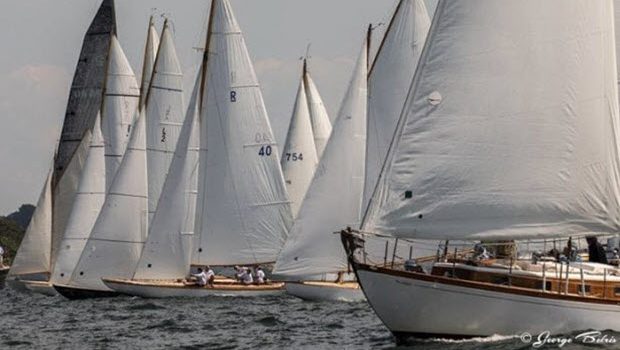


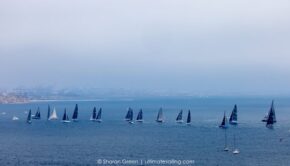
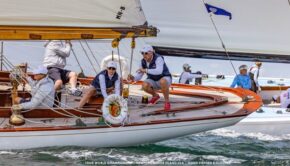
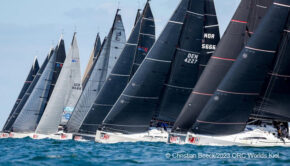
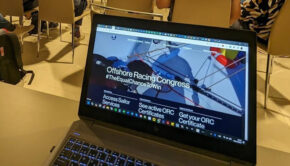
 We’ll keep your information safe.
We’ll keep your information safe.